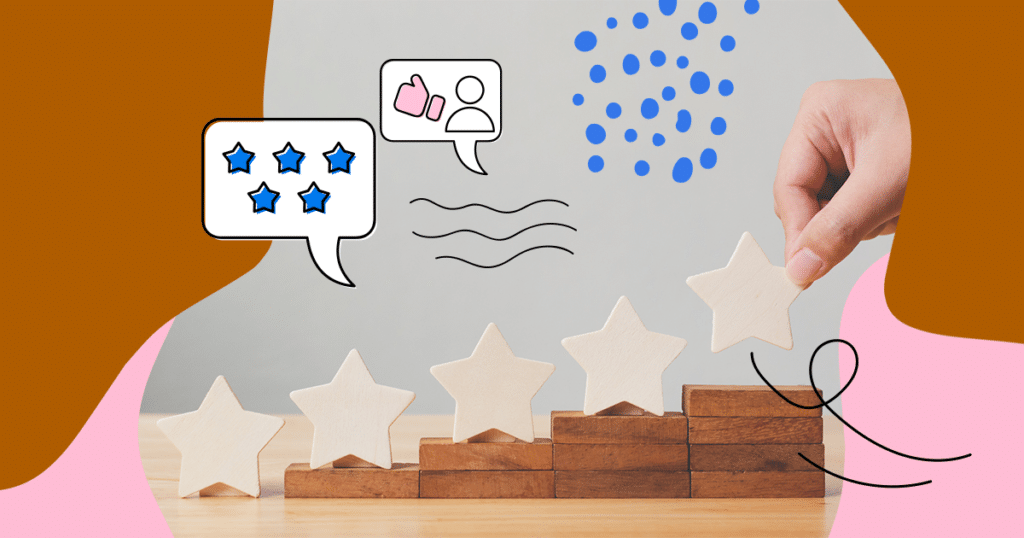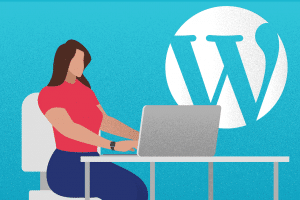The whole B2B customer experience has changed, and companies that haven’t realized it or done anything about it will be left behind.
So, for companies who really want to outsell the competition and provide an excellent customer experience, the questions are “Why does customer experience matter for B2B?” and “How to improve B2B customer experience?”

Understanding the Essence of B2B Customer Experience and the differences between B2B vs B2C Customer Experiences
When you shop for yourself online in a B2C transaction, you know what you’re looking for in a deal. You can quickly browse various companies that offer what you want and look at reviews, compare options, and then compare prices and any added extras.
Then, unless it’s a family purchase or a high-cost purchase that you need to discuss it with your partner, you can make the decision all on your own. You don’t need to ask anyone else’s opinion, and when you’re happy, you can click that “Buy” button and make your purchase.
Change that experience from B2C to B2B, and suddenly, there are stakeholders in the room, and not all of them are looking for the same things from a purchase. Some might not even agree on what they should buy or why. You might have the MD, the CFO, the head of the department who wants the purchase, and possibly even the end users of the product or service to look after. The CFO will be concentrating on the budget and what they can get for their money. The head of the department clearly wants a solution to a particular problem they have, and the users also want that solution but may have a more detailed understanding of what they need out of that solution day to day.
As a B2B marketer or business owner, you aren’t simply looking to please one person. Now, you have to understand who your stakeholders are, what they want, why they want it, and how you can do your best to provide a quality customer experience for all of them.
It might sound impossible, but it’s not, and companies who pay attention to B2B customer experience can find themselves way ahead of the competition.

Why B2B Customer Experience Matters More Than Ever
When looking to make new purchases, businesses increasingly expect to receive the same treatment as B2C customers. They want personalized experiences that meet them where they are at every stage of the buying process, and they want to speak to the company they are considering buying from in any way they please, including via social media, phone, text, email, direct message, and more. In addition, they want information available instantly, whether your business is open or closed. They don’t want to wait, and they will move on if they can’t find what they’re looking for quickly and easily, and NOW!
That means you’ve got to be highly responsive and adaptable and ahead of your buyers when they come looking. You need to know what they want, what questions they have, what format(s) they want answers in, and how to give them exactly what they need at the right time in the buying process.
If you can’t do that for them, there’s always another competitor to turn to.
Providing an excellent customer experience is no longer a case of “nice to have”, but a must-do unless you want to lose out on making sales, acquiring new customers, and retaining your current customers.

Real-world Examples of Memorable B2B Customer Experiences
If you’re wondering how you can start to build an outstanding B2B customer experience, here are just a couple of examples of what other companies did that made them stand out and attract more quality customers:
HP Instant Ink
Hewlett-Packard is known for quality printers and computers. But then, so are Dell and several others. These companies also sell printers that constantly require new ink cartridges, which are generally very expensive, often costing almost as much as buying a new printer for just one cartridge.
What HP did was genius. They looked at this from the customer’s point of view and realized that one of the most annoying things about owning a printer, apart from the high cost of cartridges, was running out of ink suddenly and unexpectedly. Another problem for customers was how to get rid of the empty cartridges afterward in an environmentally friendly way.
HP went back to the drawing board and created the Instant Ink subscription. Now, when companies or individuals buy a printer, they sign up for Instant Ink and choose the right level of subscription for them, depending on how many pages they print on average and whether they’re generally color or black ink. HP activates their cartridges in their new printer when they register it, and the printer sends information back to HP to update the ink levels and automatically sends out new cartridges before the printer runs out. If you go over your plan, you can upgrade it; if you’re not using it as much, you can downgrade it. HP provides bags to send cartridges back for recycling, solving that problem too. And the cost is far less than constantly buying cartridges at their usual rate.
Naturally, customers come back again and again because they can’t find that kind of deal anywhere else.
Royal Mail in the United Kingdom
When first- and second-class stamps first came out, they were printed with 1st or 2nd, but they were also printed with the price of the stamp. That meant that every time the price of stamps went up, Royal Mail had to withdraw the old stamps and reprint new ones with the new price. Companies and individuals had to try to use up their old stamps before the price change or cobble together the correct cost of postage from old stamps.
A very clever individual looked at what they were doing and suggested that they take the price off the stamps altogether. This saved Royal Mail a fortune on reprinting and meant that businesses and individuals could buy stamps in bulk and be sure to continue using them even when the price went up. They could even save money by stocking up just before the price hikes. Simple but extremely powerful and effective.
Strategies for Improving and Humanizing B2B Customer Interaction
You can’t begin to introduce better customer experiences and interactions until you understand fully who your customers are and examine the way you already do things. Start there and look at every possible stakeholder who might have a say in purchasing from you. Send out short surveys, ask questions when you talk to them, and really dig into what they want and need.
Next, take a hard look at your current customer journey. Does it fit with what businesses want now? Can you say hand on heart that you have the content in place in the right formats at every stage of the buying process? Look at what you can improve or even whether you need to start again from scratch.
Involve everyone in the company and make sure the changes are led from the top down. You won’t get buy-in at every level unless the CEO and the board are right behind this. Be aware that you’re going to have to break down silos, and there will be a great deal of change, and not everyone will be happy about this.
Educating everyone and showing them what to do and how they do it is an important part of the customer experience. This will help them understand why the changes need to be made and also make them feel an important part of it.
Also, be aware that you can’t change things overnight and that creating a superior customer experience will take time.
Measuring Success: Metrics for B2B Customer Experience
You won’t know if your new and improved customer experience is working without using suitable metrics. You’ll need to look at your previous metrics before the change and compare them with your new set of metrics after a few months of implementing the changes. Then, keep an eye on your metrics and analyze any areas of concern to see why there might be a problem and what you can do about it.
The way to success when providing a quality customer experience is that you can’t rest on your laurels. You have to be constantly measuring and improving to keep standards up and stay ahead of the competition.
So, what should you be measuring?
You’ll need to keep an eye on the bottom line, on how many sales you’re making, your conversion rate, how many leads you have coming in, and your churn rate.
Comparing these with your previous metrics should tell you if you’re moving in the right direction.
You’ll really want to get right into the nitty-gritty of your buying process and look at heat maps on your website, where people are going when they look around your site, if they are continuing to browse, and for how long, where they leave your site and why, what your cart abandonment statistics are, your repeat customer rate, and your customer lifetime value.
Test everything. Even something as small as the headings on your website or when you provide setup help and documentation to new buyers can make a big difference. Keep testing and improving, and you should see the difference in your churn rates and your bottom line.
One of the biggest pieces of an excellent customer experience is great content. Your customers want to browse at their own pace, learn what they need to know without having to speak to someone, and if they do have questions, they want the answers quickly, preferably from a knowledge base, a chatbot, or a live chat.
To create that kind of experience at every stage of the buying process, you need a lot of quality content, and Writer Access can help you scale your content production and provide your customers with exactly what they need to make a buying decision. You can get a free 14-day Writer Access trial to try out our talented writers and see what they can come up with, and we know you won’t be disappointed.








